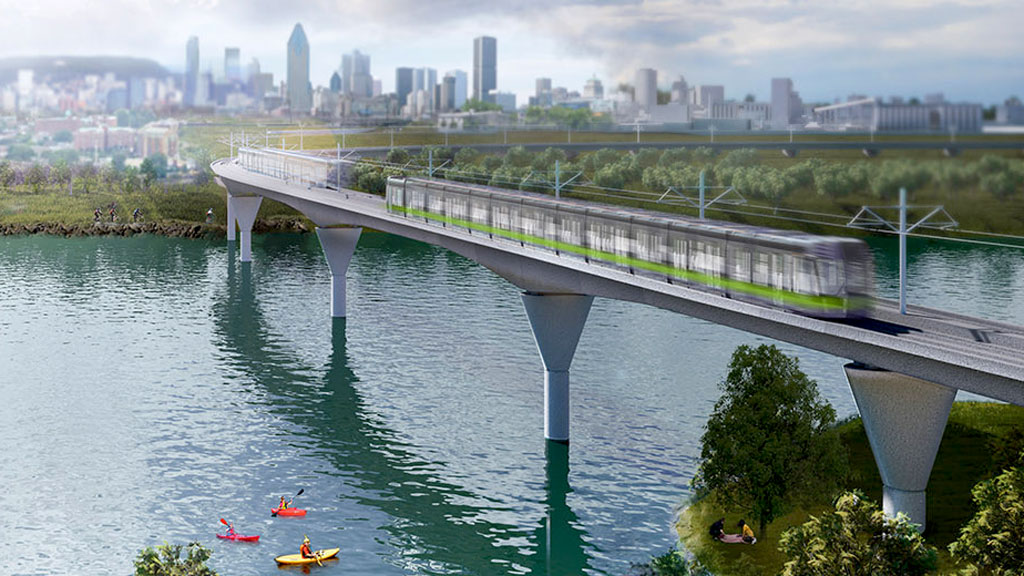A recent online panel session was billed as Canada Infrastructure Bank (CIB) CEO Ehren Cory’s debut, but the CIB’s new leader showed no reluctance to outline a new path for the embattled institution.
Cory was joined on the panel Nov. 17 at the annual conference of the Canadian Council for Public-Private Partnerships by John Casola, the CIB’s chief investment officer, with former Ontario finance minister Janet Ecker serving as moderator.
His first days on the job have been spent “getting right into the pipeline of opportunities in front of us,” Cory said.
The CIB was created by the federal government in 2017 with a mandate to invest $35 billion in revenue-generating infrastructure projects, with a plan to leverage private investment to create a portfolio of projects several times that in value.
But three years later, the CIB has spent under $5 billion and opposition parties are calling for an end to the experiment. A Globe and Mail editorial last month was titled, An Idea That’s More Bunk Than Bank.
Cory, former CEO of Infrastructure Ontario, was hired to replace Pierre Lavallee on Oct. 29. He inherited a newly bestowed $10-billion Growth Plan, covering five green-infrastructure sectors, that could provide the bank with fresh traction.
“For me, getting right into that is important because if the CIB is to establish itself, it has to start with a track record of credibility. The Growth Plan is a big part of that step,” said Cory.
Cory and Casola repeatedly made the case that the Growth Plan was not necessarily a new focus for the CIB but rather a stepping stone to many more projects. Casola even responded to a question from Ecker about where they expected the CIB to be in three to five years by saying he hoped all $35 billion would be spent.
The Growth Plan was developed by the CIB, Casola said, and is intended to reflect projects that could be delivered within the short term and meet government mandates to address the infrastructure gap, reduce greenhouse gases and stimulate the economy.
“We wanted them to be real and deliverable,” he said of the Growth Plan, which is targeting retrofits, broadband, clean-energy transmission, agriculture irrigation, and zero-emission buses and charging infrastructure.
The CIB wants a high number of deliveries within three years, said Casola.
He defended the slow start of the CIB by saying it is a venture without precedent anywhere and it has taken time to establish the right governance structure.
“Now we have the team in place, we have the foundation, we have the policies and procedures, and we are ready to go,” Casola said.
The first Growth Plan project announced was an Alberta irrigation build. Cory said that is an example of creative project development that would not normally have been on the CIB’s radar.
“I love it as an example of how we are starting to think in new and creative ways about multiple bottom lines, about smart investment, closing the infrastructure gap, supporting the economy of the future and creating connectivity, so that’s where we’re going,” said the CEO.
In future, the CIB will be more active in soliciting partnerships rather than waiting for offers, Cory said.
“What we need to do is to proactively identify gaps in the infrastructure market and holes where we can play, for us to be able go, particularly with institutional investors…here’s what we’re thinking, how does that look to you, rather than the opposite right now,” said Cory. “Right now we are in a target-rich environment. We’ve got a backlog of projects with public-sector entities and we are saying, private sector, let’s see how you play here, but we think in the future there is an opportunity for us to flip that conversation and start with the market and work backwards.
“The Growth Plan is the start of that.”
Cory also feels the CIB should be actively involved in derisking projects, taking on risk to attract partners, as opposed to other government infrastructure agencies that negotiate hard to avoid taxpayers having to carry risk premiums.
“Rather than shoving it across table, I think we are much more thinking about how do we participate together and how can we align incentives so that the private sector is taking smart risks and we are there to support in that.”
The CIB will be more creative in future as it attempts to pull together projects.
“That to me is what is holding up many of the big projects around the country,” said Cory. “There are big risks, many levels of government are saying, who takes those… but what we need to figure is how do we align incentives to share smartly in those and manage them effectively rather than debating who takes them.”
Follow the author on Twitter @DonWall_DCN.











Recent Comments